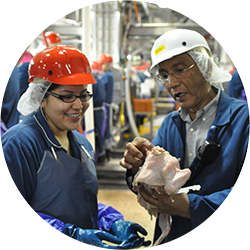Communications to Change Behavior


You are a manager and you care about the people that you lead. You’ve invested a significant amount of money annually to train your employees but when an accident happens you wonder why they didn’t do what they were trained to do. Then you start thinking, “I showed them the proper way to do this. Why did they cut corners?” That’s a good question, but you may not like the answer.
Why do people cut corners and ignore their training?
For 100+ years, behavior theory studies have shown that about 90% of incidents and accidents occur because of human error. In fact, most of these errors occurred despite the fact that the employee had been trained properly on how to prevent it.
So what can I do to change this?
The reality is that the only way to minimize these types of events is by changing the inherent behavior of the employee. That is, the correct behavior needs to become the natural reaction to an incident – it must become a natural habit and not a conscious choice.
How do I create the right habits?
For something to become a habit, it has to be an action or thought that is repeated often. Let me give a quick example we can all visualize – teaching your child to make their bed. When my daughter Jillian was a few years old, it was time to start teaching her about how to make her bed. I remember demonstrating the proper technique, then over the next week, we made it together; eventually standing beside her as she made it on her own. After this, I stayed out of her room but would consistently remind her every morning to make her bed. It took about 4 weeks till she started to make her bed without me asking her to do it. It was that consistent and constant reinforcement that successfully built the desired habit.
Let’s look at an example of an effective approach to reinforcing training and developing the right habits in the workplace.

Meet John. He’s a fairly new employee with ACME Corp. ACME places a lot of emphasis on creating a safety culture throughout the organization. This month, his company is focusing on building awareness around Forklift Pedestrian Safety. On John’s first shift of the month, he completes a brief course on the subject. (This course is completed by all employees of ACME Corp.)
Later in the week John’s supervisor, Gabriel, gathers the team together before the shift for a weekly safety talk. Gabriel dedicates 5 minutes to talk about Forklift Pedestrian Safety and engages the team in a brief conversation. In addition to regular Supervisor engagement, ACME Corp uses passive tools like digital signage content in the break room and posters around the facility to promote the topic. These are excellent mediums to drive what we call 24/7 Communications.
Several days later, John is approached by Gabriel to discuss an on-the-job observation he’s conducted. All of these tools, utilized throughout the month, provide the consistent and constant reinforcement that build habits.
In your workplace, what are you doing to consistently and constantly reinforce habits with your employees? If the answers is nothing, you might want to reconsider developing a program that goes beyond. After all, we all need to be able to make our bed.






